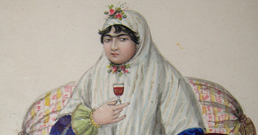The
Today we take pictures for granted. They are printed in magazines, newspapers and books. They are in digital form on computers and the internet and, with compact cameras which fit into a pocket or a handbag, we can make, exchange and publish high quality pictures of our own.
It was not always like this. Before the last decades of the 19th century magazines, newspapers and books contained few illustrations and very few indeed were in colour. The pictures they contained were engravings and each engraving had to be carefully prepared by a skilled craftsman, usually copying from a picture painted by an artist.
Imagine the difficulty for a tourist who wanted a souvenir of the places he had visited. As tourism developed during the 19th century, local artists in many countries realized there were a demand and learnt how to satisfy it. For the more serious-minded they made pen and ink drawings or water-colours of monuments and remarkable buildings. But for human interest their subjects were people: people who were similar to – yet different from – those with whom the visitor was familiar in his own country.
The paintings in the
The paintings were purchased or possibly commissioned by a European and were produced by an anonymous Iranian artist. To please the client, the artist depicted his subjects in a more western style than the traditional Iranian painting of this period. The modelling, the shadowing and the painterly technique of these works contrast with the general lack of illusionism found in Qajar painting. These paintings were originally catalogued by the
So, most likely, we are dealing with an English purchaser, quite possibly a traveler who visited
Pictures of monuments and buildings rarely generate a warm response from those back home who have not seen them. But pictures of people capture the imagination. Professions or trades were ideal subjects because everyone can identify with most of them. Each country, after all, has the same occupations and those who exercised them in each country were traditionally dressed or equipped in almost identical fashion. They were typical. Everyone knows what our carpenter or our baker looks like so it is curious and amusing to see how different or how similar their carpenter or baker is to ours.
Travelers and collectors, publishers, engravers and artists were always on the look-out for new subjects or new angles on old subjects. In


